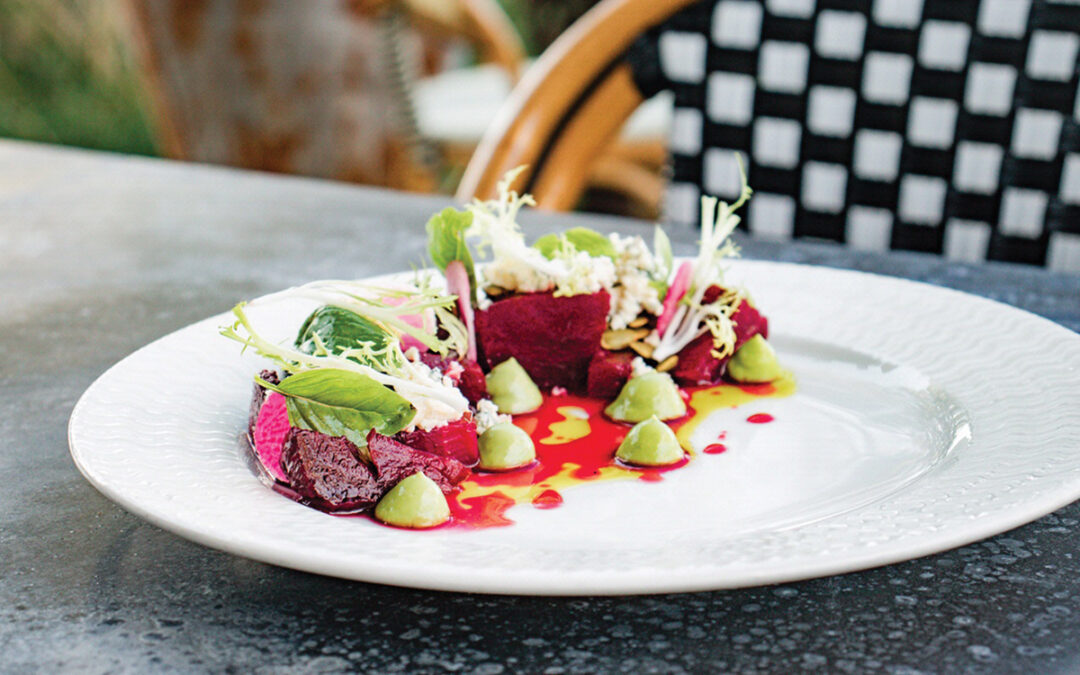A soaring cherry tomato, a flying lemon seed, or an avalanche of out-of-control spaghetti sauce is enough to unravel even the most confident woman. What’s a little dining disaster among close friends?
Accidents happen to all of us, but there is more at stake at the dining table than just a little spilled tea.
When it comes to dining, I have actually watched grown adults fight over who was going to have to sit next to me. I hear comments like “I can’t eat if you are watching” or “I am too nervous to sit next to you while I eat.”
Rest assured, the No. 1 protocol rule is to always put others at ease, and I solemnly promise that if you are not paying me to train and critique you, I will never comment on your table manners. It doesn’t mean, however, I don’t notice. Scarier than that, so do others. Money does not buy polish (training does), and some of the wealthiest people continue to use the wrong bread plate. And, nope, even if I am sitting next to her, I don’t tell.
One of my favorite dining stories happened several years ago when I was meeting with a high-ranking corporate executive. He was discussing his staff’s lack of, shall we say, social graces. He droned on and on about his own training as a child (I hear this quite often) and how his mother and grandmother instilled “good manners” into him from an early age. When it came time to order, he very politely directed me to order by commenting, “Ladies first.” (His grandma must have forgotten to tell him that, in business, women are gender neutral.)
He then questioned the server on all the specials and finally opted for another entrée. “My favorite,” he proudly exclaimed, “Quickie Lorraine.” Right then and there I thought I would completely lose it. I had to bite the inside of my cheek to keep from howling like a wild animal with laughter. The very professional server didn’t say a word but darted his eyes at me, no doubt thinking the same thing. Meanwhile my self-impressed dinner companion meant Quiche Lorraine and, nope, I didn’t tell him!
Menu items can often be a little confusing, so I am hopeful that a Menu Etiquette Primer may be of help. This way, the next time you are offered foie gras by your date or business associate, you will know without a shadow of a doubt that you are about to eat the succulent enlarged liver of a goose or duck, probably seared and served warm. Mm, mm, good. You either love it or hate it, but now at least you know what it is!
Here are a few more menu tongue tantalizers:
The appetizer
Served before a meal to whet the appetite and encourage conversation among your guests. May include:
Caviar (KA-vee-ahr) — The salted roe of the sturgeon (fish eggs). Usually accompanied by cooked, chopped egg yolks, toast points, chopped onion and parsley.
Foie Gras (Fwah-Grah) — A paté made from goose liver (marinated in cognac) and truffles. Seared and served warm or made into a paté and served chilled.
Paté (Pah-TAY) — The liver or meat of fowl finely minced or ground and seasoned.
Carpaccio (Kahr-PAH-chee-oh) — Raw beef that is thinly sliced and drizzled with olive oil, lemon juice and seasoning.
Soup
Hot soups
Consomme (KON-suh-may) — A clear soup, typically made of beef. Sip from the side of your spoon.
Chowder — A thick soup containing a meat or fish. Includes vegetables such as potatoes and onions in a milk or tomato base. Sip from the front of your spoon.
Bisque (Bihsk) — A rich, creamy soup made from meat, fish, shellfish or pureed vegetables. Sip from the front of your spoon.
Bouillabaisse (Bool-yah-base) — A highly seasoned stew made of several kinds of fish and shellfish. Sip from the front of your spoon.
Cold soups
Vichyssoise (Vish-Ä”-SWAHZ) —Consists of pureed potatoes and leeks. Sip from the side of your spoon.
Gazpacho (Gahz-PAH-choh) — A tomato base with vegetables. Sip from the front of your spoon.
Fish course (optional)
You may be served sorbet between courses to cleanse the palate.
Salad
Tossed: Served with a dressing, in or from a bowl.
Composed: Artfully arranged for an individual serving. For example, orange and jicama salad with a light oil dressing.
Entree
The main course usually consists of a chicken, meat or fish item. It usually includes a vegetable and starch.
Pace yourself, don’t eat too fast or too slowly.
Dessert
Cheese and Fruit Tray (Optional)
An array of hard and soft cheeses, combined with fruits such as pears, grapes and apples.
Check and Mignardises
Your bill may be presented with small bites of chocolate, mints, petit fours or truffles — mignardises (Meen Yawn NeH), served with coffee.
Other terms to know:
Prix Fixe (Pree-fiks) — A multi-course meal, offered at a set price. Usually the guest will have an option of two to three choices per course. The price remains “fixed” regardless of his choice.
Table d’Hote (Tahb-luh-dote) — A multi-course meal offered at a set price. It is different from the Prix Fixe in that the price of the entrée determines the cost of the meal.
Sommelier (Sew-mel-YEAH) — A waiter who has extensive knowledge of wine and who manages wine service in a hotel or restaurant.
Maitre d’ (May-traw-DEE) — A restaurant employee who is in charge of the waiters and the seating of customers.
Cleansing the palate — The process of clearing away a particular taste from your mouth before another is presented.
Ganache (Gahn-AHSH) — An icing made from chocolate and heavy cream.
Coulis (KU-Lee) — A pureed fruit sauce.
Gratinee (Gran-ti-NEE) — A topping of bread crumbs or cheese, heated through.
Beurre Blanc (Br Bla) — A simple French sauce that is made from white wine, vinegar, shallots and butter.
Creme Anglaise (An-GLEZ) — A custard sauce, served hot or cold.
Reduction — The process of rapidly boiling liquid until thick, giving the sauce or syrup an intense flavor.
Coquilles St. Jacques (Hoh-keel Sahn-Zhahk) — Scallops in a white creamy wine sauce with bread crumbs or cheese on top and and grilled until golden brown in the oven.
Quiche Lorraine (KEESH-lor-RAIN) — This wonderful dish was created in a region between France and Germany called Alsace-Lorraine. It is a pastry shell filled with a mixture of eggs, seasoning and cream. Other ingredients such as cheese, mushrooms, fish, ham, bacon bits and onions can be added. This dish can be served as an appetizer or for lunch or dinner as the main meal.
On the Half Shell — This term is used to describe raw oysters served in an oyster shell, normally the bottom part of the shell. The shells are displayed on a plate in a bed of ice to keep them cold. Some like to sip the oyster from its shell, while others like to add lemon juice, Tabasco sauce, vinegar, horseradish or cocktail sauce to the oyster before enjoying.
Oysters Rockefeller can be served different ways, broiled or baked. However, they are all topped with a wonderful combination of butter, seasonings, bread crumbs and chopped spinach. Shells are placed on a bed of rock salt to stabilize them and keep them from spilling their contents.
The last word
Are you full yet? Never! “The food was delicious” or you are pleasantly “sated.” Women — even delightful, witty, intelligent women — tend to make comments like “Ugh, I’m so full I could pop” or “I shouldn’t have eaten the dessert; it is going straight to my hips.” Always be aware of your comments at the table. Dinner conversation should be light and positive.
Another favorite story of mine is about a genteel little woman, very social and very polite, approximately 85 years young. Our formal meal had ended, and we were relaxing over coffee and dessert. She was a wonderful conversationalist and quite fascinated with my career. She grew up very “proper,” and her husband was a retired brigadier general. Somewhere between our second and third cup of coffee, she reached across her husband’s chest to whisper to me in her very southern drawl, “If I could just burp, I’d feel so much better!” Right then and there we instantly bonded because I could relate — I just couldn’t say it out loud!
Just a reminder: Etiquette is not artificial gestures and mannerisms; it’s a sincere interest in others — with a few good rules thrown into the mix. It’s not about you; it’s the way you make others feel when you are around. Diane Gottsman is director of the Protocol School of Texas and appears regularly on San Antonio Living weekdays on WOAI.
Author: Diane Gottsman









0 Comments